In the beautiful churchyard of St Peter's Church in Little Rissington rest 48 airmen from Britain and her Empire, along with one Royal Engineer, from the Second World War. There are also several other Commonwealth graves from before and after the war. On Armistice day the branch lay a wreath and crosses on the graves of those who died in and around Chipping Norton. As I am always asked about the men who lie there I have put their stories here, in order of the dates they died.
19th September 1939:
Pilot Officer JAMES EDWARD HULL Royal Air Force, Pilot, 207 Squadron aged 24.
The son of Francis and Kathleen Hull of Hastings, Hawke Bay, New Zealand. He had visited the UK in 1929 as part of the Empire Scout Jamboree. He enlisted into the Royal New Zealand Air Force and transferred to the RAF on 16th August 1939. He came England and joined 207 Squadron, qualifying as a pilot. He took off from RAF Cranfield, in Bedfordshire, on 19th September 1939 on a direction finding and homing exercise. He was killed when his Fairey Battle Mk1 K9448 crashed into a hill near Winchcombe in bad visibility during a heavy rainstorm. His air gunner, Robert Malcolm, 18, was also killed in the accident and is buried in Glasgow.

.jpg?timestamp=1554804237705)
7th November 1939:
Pilot Officer DONALD KERR ROBERTSON Royal Air Force, Pilot 207 Squadron, aged 20.
He was the son of John Kerr and Beatrice Mabel Robertson, of Sutton Poyntz, Dorset. He was commissioned as an acting Pilot Officer in August 1937. He was the pilot of Fairey Battle K9238 that had taken off from RAF Cranfield in Bedfordshire. Whilst carrying out low flying he ran into cloud and flew into the ground near Stow-on-the-Wold. Sergeant Ronald Harrison and Aircraftman 2nd Class Francis Wilkes were also killed, being buried in Liverpool and Birmingham respectively.
.jpg?timestamp=1554804237705)
17th August 1940:
Sergeant DONALD DUNCAN Royal Air Force Volunteer Reserve, Pilot, 6 Flying Training School, aged 20.
He was the son of George and Alice Duncan, of Hull. He enlisted into the RAFVR in January 1937, training as a pilot. He was posted as an instructor to 6 FTS based at Little Rissington and was killed when undertaking unauthorised low flying in Avro Anson L7907, hitting trees and crashing at Lodge Park, Eastington, Gloucestershire. Sergeant Pilot Eric Osborne was also killed in the crash, and is buried in Worcester

.jpg?timestamp=1554804237705)
2oth September 1940:
Leading Aircraftman MALCOLM ALAN ROBERT SUTHERLAND, Royal Air Force, Pilot under training, 6 Flying Training School, aged 28.
He lived in Wingreen Colehill, Wimborne, Dorset and was the son of Mr & Mrs D Sutherland of Twickenham, London. He had been a stockbroker when he gained his Royal Aero Club certificate at the London Air Park flying Club flying a De Havilland Gipsy Moth on 22nd October 1938. He was a pupil pilot, under Sergeant Toby Sturgis, of 6 FTS based at Little Rissington. They took off from there in Avro Anson Mk 1 N9821 and at 1430 were in collision with an Airspeed Oxford from 2 SFTS at RAF Brize Norton 3 miles South of Little Rissington. The Oxford which had taken off from RAF Windrush was piloted by Leading Aircraftman Benjamin High, on a blind flying exercise with the cockpit blacked out. Both aircraft crashed near Great Barrington, all 3 men being killed. Sergeant Sturgis is buried in Glynde, Sussex and LAC High in Milford Haven. Benjamin High was training to be a bomber pilot and had one week to go before he had his wings. 
.jpg?timestamp=1554804237705)
3rd October 1940 FLYING OFFICER IAN FORBES DAVIES, Royal Air Force Volunteer Reserve, pilot, 8 Maintenance Unit, aged 23. He was the son of William and Alice Davies, of Stockwell Rd, Lambeth, London. He had studied at Battersea Polytechnic and then worked as an experimental engineer before being called up for service and commissioned as a Pilot Officer in November 1939.
FLYING OFFICER REGINALD TREVOR SHAW, Royal Air Force, pilot, 8 Maintenance Unit, aged 28. He had married Anna Brunnsteiner in 1939 in Bourton-on-the-Water and had lived there whilst serving as a sergeant pilot at RAF Little Rissington. He had been commissioned as a Pilot Officer in May 1940.
They were both killed when their Percival Proctor P6274 flew into the ground in bad visibility at Hillcot Wood, Andoversford at 1730 after a deployment to Shobdon, Herefordshire.
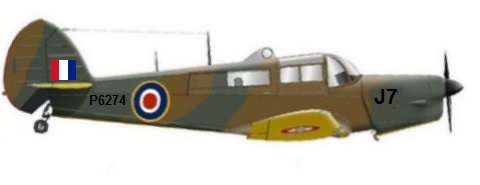
.jpg?timestamp=1554804237705)
LEADING AIRCRAFTMAN DOUGLAS RONALD NOEL TOOTH, Royal Air Force Volunteer Reserve, pilot under training, 6 Flying Training School, aged 28.
He was the son of Adolphus and Margaret Tooth, of Torquay and attended Radley College near Abingdon from 1926. He then lived at 56, Curzon Street in London, where he worked as an architect's assistant. He enlisted into the RAFVR in late 1939 and was selected for pilot training. He had taken off from Little Rissington in Avro Anson Mk1 L7926 on a training flight and flew into high ground 3 miles north east of Laycock, Wiltshire after encountering low cloud. The pilot was under instruction to return if weather conditions worsened, but failed to heed this.

The ashes of his elder brother Eric, who had served in the RNAS and RAF during the First World War are also interred in the grave, pictured with Douglas below.
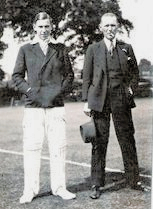
.jpg?timestamp=1554804237705)
14th April 1941:
Leading Aircraftman FREDERICK HARRY JAMES HUCKS, Royal Air Force Volunteer Reserve, aged 45.
He worked as a driller in a gramophone company and then joined theGreat Western Railway in May 1914 and worked as a cleaner in Old Oak Common sheds, resigning a month later. He was also a part-time soldier and had joined the 8th (Territorial) Battalion of the Duke of Cambridge’s Own Middlesex Regiment in December 1911 as a Private. Mobilised as the 1/8th at the outbreak of the First World War, he was sent with his Battalion to Gibraltar for Garrison duties, returning to England in February 1915. On the 8th March 1915, he arrived in France with his Battalion, serving in A Company. On 29th May 1915, the Battalion were in the front line at Hebuterne on the Somme when they came under heavy artillery fire. Private Hucks was wounded and evacuated from the field. He was treated at Camiers General Hospital for his wounds and shell shock before being evacuated home. After recovery he joined the Bedfordshire Regiment, serving on the Home Front and being made upto Lance Corporal. He married Lillian Holmes in 1917 and lived in Norwood Road, Southall. He was discharged from the Army in April 1919, being physically unfit for service and awarded the King’s Silver War Badge. In January 1937 he joined the RAFVR and at the outbreak of war posted to RAF Rissington as a Radio Service Engineer. He died suddenly of heart failure brought on by pulmonary tuberculosis and acute gastritis at 1, Church Street, Stow on the Wold. His son Cyril Hucks died whilst serving as a Driver on active service with The Royal Corps of Signals. He was aged 24 and is buried in Southall Cemetery.
.jpg?timestamp=1554804237705)
18th May 1941:
Corporal DAVID SAMUEL TEMPLE, Royal Air Force Volunteer Reserve, pilot under training, 6 Flying Training School, aged 19.
He was the son of Myer and Rebecca Temple, of Harrow, Middlesex, his father died when David was just 3. His mother married James Atkins in 1937, who also became a an RAF pilot. David worked as a civil servant before the war. He enlisted into the RAFVR shortly after the outbreak of the war and selected for pilot training, being posted to 6FTS at RAF Little Rissington. He was aboard an Armstrong Whitworth Whitley Mk V P5047 of 10 Operational Training Unit, which took of from RAF Windrush Relief Landing Ground at 1629. The port tyre burst causing the aircraft to swing violently. The aircraft became airborne but shortly after stalled, plunged to the ground and cartwheeled, bursting into flames. David Temple died of burns whilst Sergeant Pilot John Trevor Smale and Leading Aircraftman John Rawcliffe also died in the crash, whilst 8 others aboard the aircraft were injured. His stepfather was killed in 1943 when his Bristol Beaufighter was shot down.
.jpg?timestamp=1554804237705)
LEADING AIRCRAFTMAN GORDON JAMES BURKLE, Royal Air Force, pilot under training, 6 Flying Training School, aged 25.
He married Sylvia Sweet in Friern Barnet, Middlesex in 1939 and was a manager and buyer for a plywood business and served as an Air Raid Protection Warden. He joined the RAFVR in May 1940 and was selected for pilot training at 6FTS. He was the pilot of Airspeed Oxford Mk II V3777 which collided with another Oxford and crashed near Little Rissington airfield. Leading Aircraftman Brian Richards piloting the other Oxford was also killed and is buried in Helston.

 (1) (1).jpg?timestamp=1512311274680)
.jpg?timestamp=1554804237705)
26th August 1941:
Leading Aircraftman VINCENT CHESTER STEWART RHODES NEWMAN, Royal Air Force, Pilot under training, 6 Flying Training School, aged 25.
He was married to Margaret and lived at 12, Oaklands, Isleworth, Middlesex, where he had worked as a bus driver. He had been commissioned into the Royal Marines as a 2nd Lieutenant, pictured below, on 7th December 1939, serving on the Chatham Division. He then transferred to the Royal Air Force in 1940 to train as a pilot. He was flying Airspeed Oxford Mk1T1043 along with Norwegian pilot instructor Leading Aircraftman Rudolf Herland when Airspeed Oxford Mk 1 T1043 from 6 Flying Training School was being flown on an authorised instrument flying sortie when at about 2,000 feet the port mainplane fractured. The aircraft broke up as it crashed at Ditchley Park. The crew did not help their chances of survival as one was not wearing a parachute and the other's harness was not fastened and both aircrew were killed.

.jpg?timestamp=1554804237705)
LEADING AIRCRAFTMAN PETER REYNOLDS WEST, Royal Air Force, pilot under training, 6 Flying Training School, aged 22.
He was the son of William Reynolds and Adeline West, of Enfield, Middlesex. He attended Minchenden Grammar School between 1935 and 1937. He joined the army before transferring to the RAF in 1940. Selected for pilot training, he joined 6 FTS at RAF Little Rissington, He was flying Airspeed Oxford Mk 11 V73783 on a solo sortie of single engine flying when he allowed the aircraft to lose speed in a flat turn and it entered a spin and crashed at Chipping Norton airfield. The instructor was criticised for allowing LAC West to fly solo, as on past asymmetric flying he had allowed his aircraft to get in a spin.
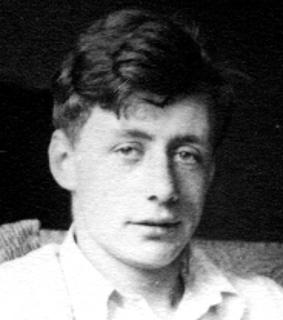
.jpg?timestamp=1554804237705)
14th October 1941:
Sergeant WILLIAM LESLIE FALARDEAU, Royal Canadian Air Force, pilot aged 19.
He was the son of Earl and Hilda Falardeau of Winnipeg, Canada. William Falardeau was a camera grip on the 1940 Powell and Pressburger film "49th Parallel" and also played an aviator on the rescue floatplane as it arrives at Cape Wolstenholme (below right). A second role for him was as a double for Raymond Massey in a few scenes. He died before the film was released. He had been a keen aviation enthusiast and won cups for his model aircraft. He joined the Royal Canadian Air Force in November 1940 and arrived in England in August 1941.
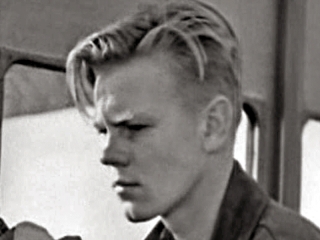
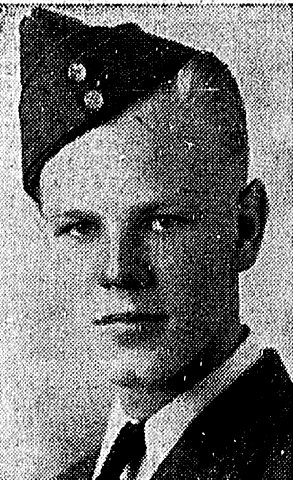
Sergeant BILL INGALLS HOESE, Royal Canadian Air Force, pilot, 22 Operational Training Unit, aged 26.
He was the son of Otto and Irene Hoese of Worthington, Indiana in the United States and worked as an assistant manager for a poultry and egg producers. He enlisted into the RCAF in October 1940 and selected for pilot training. He was posted to England joining 22 OTU in September 1941.
The above were aboard Vickers Wellington Mk 1C serial no R1654 of 22 Operational Training Unit which took off from RAF Wellesbourne fMountfield or a navigation exercise. Encountered poor weather conditions and while flying in cloud lost control and dived into the ground at 1044 not far from the Gloucestershire-Oxfordshire border about 1 mile west of Cornwell, 3 miles west of Chipping Norton. Three other crew members also died.
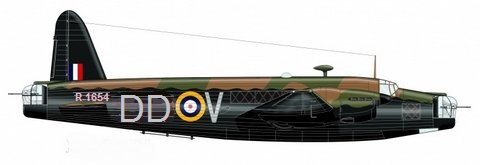
.jpg?timestamp=1554804237705)
21st October 1941:
Corporal SIDNEY FRANCIS ANDREWS, Royal Air Force Volunteer Reserve, aged 25.
He was the son of Sidney Herbert and Lilian Andrews of Ealing, Middlesex, England. Before being called up for service he had worked as a railway porter and had married Sheila Fulcher in June 1940.
Aircraftman 2nd Class JOHN BASELEY, Royal Air Force Volunteer Reserve, aged 31.
He was the son of W. T. and Isobella Baseley, of Notting Hill, London and had been a plumber before the war.
Leading Aircraftman MICHEL BRADY DE MAYNARD, Royal Air Force Volunteer Reserve, Pilot under training, aged 18.
Aircraftman 2nd Class ROBERT LESLIE COPPIN, Royal Air Force Volunteer Reserve, 6 Service Flying Training School, aged 27.
He was the husband of Elsie May Coppin, of The Causeway, Langenhoe, Essex and had worked as a plasterer before the war. They had a son, Michael together.
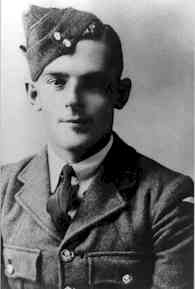
Aircraftman KENNETH JOHN FULLER, Royal Air Force Volunteer Reserve, aged 20
He was the son of Guy and Hester Fuller of Mosterton, Dorset.
Leading Aircraftman SYDNEY GEORGE PETER MEDWIN, Royal Air Force Volunteer Reserve, pilot under training, aged 19.
He was the son of Sidney Alfred and Florence Medwin, of Cookham, Berkshire.
Aircraftman 2nd Class FRED POULTER, Royal Air Force Volunteer Reserve, aged 36.
He was the son of George William and Fanny Poulter and lived at 22 Carnley St, West Melton, Yorkshire with his wife Beatrice and a daughter, working as a general labourer. He had just returned from leave with them when he died.
Leading Aircraftman HAROLD THOMAS STOKES, Royal Air Force, aged 60.
He had married to Laura Jeff in Cheltenham in September 1909 and he had worked as a photographer. He enlisted into the Royal Flying Corps on 18th December 1916 as an Aircraftman and joined 8 Squadron in France on 12th February 1917 as an AC2 photographer. At that time 8 Squadron were engaged in a reconnaissance role flying the British Aircraft Factory BE2 and then the Armstrong Whitlworth AK8. He served with them in France until 10th February 1919 and discharged to the Reserves the following month. He had 4 children and was recalled to service at the beginning of the Second World War.
On 21 October 1941 a RAF bus was in collision with a stationary lorry on the London Road, Charlton Kings, near Cheltenham. The bus caught fire and 9 airmen died, in addition to the above AC2 Ronald Rosenthall died, being buried in Hull, with 13 others being injured. The men has been in Cheltenham for a night out and were on the way back to Little Rissington when the crowded bus hit a broken down lorry at shortly after 2300. Although the lorry did have a red lamp on the back as a warning it was a dark night and wartime blackout conditions meant that the road was unlit. At the inquest held on Monday 3rd November a verdict of accidental death found by the jury in a unanimous decision. They said that they would like to exonerate the driver of the coach from all blame but thought the authorities should have had a older and experienced man driving the bus, especially at night, than the young man carrying out the duty. The coroner intimated that he agreed with the verdict of accidental death, but entirely disagreed that no blame attached the driver.
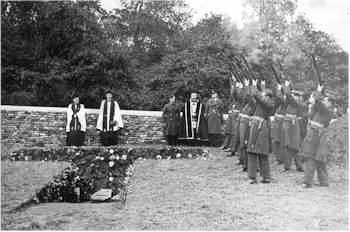
.jpg?timestamp=1554804237705)
8th February 1942:
Driver BERNARD HAROLD SPARROW, Royal Engineers 701 General Construction Company, aged 28.
He was born in Gloucestershire and was working as a gardener when he married Dorothy Hill in Upper Slaughter in September 1938. Before the war he was living with his wife in Little Rissington, working as a gardener. He was with the Royal Engineers who were laying three new asphalt runways at RAF Little Rissington in 1942. Bernard Sparrow was a driver in charge when he died of cardiac failure bought on by diphtheria at the Delaney Fever Hospital in Cheltenham.
.jpg?timestamp=1554804237705)
28th March 1942:
Sergeant EDWARD JOHN BIDDULPH, Royal Air Force Volunteer Reserve, pilot, 14 Operational Training Unit, aged 20. He was the son of Frederick and Mabel Biddulph of Salisbury, South Rhodesia.
Sergeant RAYMOND VIVIEN DANIELS, Royal Australian Air Force, 14 Operational Training Unit, aged 27. He was the son of George and Florence of Nanya Siding, Queensland, Australia.
Sergeant BERTRAM NOSEWORTHY, Royal Air Force Volunteer Reserve, 14 Operational Training Unit, Wireless Operator/Air Gunner aged 20. He was the son of Kenneth and Elizabeth Noseworthy of St John's, Newfoundland.
Sergeant ARTHUR WILLIAM WESTGATE, Royal New Zealand Air Force, 14 Operational Training Unit, Air Gunner aged 25. He was the son of William and Alice Westgate of Tikitiki, Auckland, New Zealand.
They were the crew of Handley-Page Hampden P5398 which took off from RAF Cottesmore on a night navigation sortie. At 2110 the aircraft plunged into the ground and caught fire at Whittle Farm, Brockhampton, 5 miles east of Cheltenham.

.jpg?timestamp=1554804237705)
8th April 1942:
Sergeant WALTER FRANK GOOD, Royal Air Force Volunteer Reserve, 15 Operational Training Unit, Observer, aged 34. He was the son of Walter and Marion Good. He married Phyllis Lowdnes in 1933 and lived in Congleton, Cheshire, where he worked as a senior draughtsman's assistant.
Pilot Officer JAMES ROBERT LEE, Royal Air Force Volunteer Reserve, 57 Operational Training Unit, Pilot aged 21. He was the son of George and Anna Bell Lee, of Cormanche, Texas, United States.
Sergeant Good was aboard Vickers Wellington Mk1C L7818 which took off from RAF Harwell for a cross-country excercise. During a rainstorm it collided with a Supermarine Spitfire Mk1 R6686 from 57 OTU based at RAF Harwarden and flown by PO Lee. Out of control both aircraft crashed a few hundred yard apart in the valley of the Broadwater Stream, near Cold Ashton, Gloucestershire with the loss of all crew.


.jpg?timestamp=1554804237705)
FLYING OFFICER RONALD HENRY IMESON, Royal Air Force Volunteer Reserve, pilot instructor, 6 (Pilot) Advanced Flying Unit, aged 21. He was the son of Frank and Annie Imeson, of Hayes, Kent. He had worked in the civilian staff section of the Metropolitan Police for the S1 (firearms branch) at Scotland Yard since August 1939. He had joined the RAFVR in 1940 and was called up for service in August 1940. He was commissioned in May 1941 as a Pilot Officer and was posted to 6 FTS from No 2 Central Flying School in July that year. He was promoted to acting Flying Officer on 31st December 1941 and was an instructor. In April 1942 6 FTS was re-designated to 6 (Pilot) Advanced Flying Unit, to give further instruction to pilots who had learnt to fly in the Empire Training Schools. He was killed aboard Airspeed Oxford AP476, along with Sergeant pupil pilots Walter Fox and John Carthew, when it crashed into trees at Glyme Farm near Chipping Norton Relief Landing Ground, after an engine failure.
.jpg?timestamp=1554804237705)
SERGEANT DAVID GORDON HENDERSON, Royal Canadian Air Force, pilot, 6 (Pilot) Advanced Flying Unit, aged 22.
He was the son of David Gauld and Ann Henderson, of Edmonton, Alberta, Canada. He had worked as a warehouseman and had originally applied to join the RCAF in 1939 but was rejected having a weak left eye. He then enlisted into the 19th (Reserve) Alberta Dragoons in 1939. He re-applied in March 1941 and passed the eyesight test and was selected for pilot training. After completing training in Canada he was sent to England and joined 6(P)AFU for further instruction. He took off from Chipping Norton Relief Landing Ground at 0400 in Airspeed Oxford I DF293, on a night flying exercise. Shortly after take-off it plunged into the ground near the airfield at high speed after he lost control. It was considered that his lack of experience on the type, coupled with no recent instrument flying contributed to the accident. David Henderson had plans to be a professional saxophonist after the war.
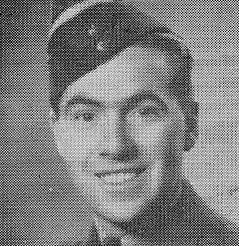
.jpg?timestamp=1554804237705)
17th August 1942:
PILOT OFFICER WILLIAM ALEXANDER HARVEY MILLAR, Royal Air Force Volunteer Reserve, pilot, 6 (Pilot) Advanced Flying Unit, aged 21.
He was the son of William and Agnes Millar of Chickerell, Dorset. Before the war he was an engineering student at a paper mill and a member of the RAFVR. He took off from RAF Little Rissington in Airspeed Oxford Mk1 N6321 on a sortie to give flight experience to Air Cadets attending a camp there. On board were two Air Cadets, brothers Edwin and Donald Sims, aged 17 and 16, from 149 (Poole) Squadron. The aircraft was seen to be flying recklessly low over Northleach and hit the ground 3 miles north of the town, with the loss of all three aboard.
.jpg?timestamp=1554804237705)
19th August 1942:
SERGEANT EDGAR DAVY FRANCIS, Royal Australian Air Force, pilot, No 6 (Pilot) Advanced Flying Unit, aged 24.
The son of Henry George and Mildred Ethel Francis, of Wangaratta, Victoria, Australia, he had been a bank clerk and a member of the 17th Battalion Militia when he joined the RAAF reserves in August 1940. He signed up for the duration of the war on 26th April 1941. Selected for pilot training, he embarked at Sydney for Canada arriving on 4th November 1941. He trained at the 3rd Service Flying Training School in Calgary before being sent to England in March 1942. He was posted to the 6(P)AFU at RAF Little Rissington in June 1942. He was piloting Airspeed Oxford AB700 which lost power when taking off from RAF Little Rissington and struck a tree. He had not set the throttle friction nuts and during the take-off the throttle levers vibrated back, causing the engines to lose power and height.

.jpg?timestamp=1554804237705)
21st August 1942:
Pilot Officer ALAN MACDONALD HENDERSON, 2nd Pilot, aged 30. He was the eldest son of Major Ian Macdonald Henderson and Kathleen Henderson of Woking, Surrey. He was at Charterhouse between 1926 and 1929 and worked for Dennis Bros in Guildford, manufacturers of commercial vehicles. He the Territorial Battalion of the Gordon Highlanders in 1933, and given an emergency commission as a 2nd Lieutenant in July 1940. He served with them until 1941 when transferred to the Royal Air Force Volunteer Reserve to train as a pilot. He is buried in St Peter's Churchyard, Little Rissington.
Sergeant MALCOLM STEVENSON HAYNES
Wireless Operator/Air Gunner, aged 21. He was the son of Evan and Elizabeth Haynes of Whitchurch, Glamorgan and enlisted into the Royal Air Force Volunteer Reserve in Penarth in May 1940.
Sergeant JOHN MACDONALD RANKIN
Pilot under instruction, aged 25. He was the son of Donald and Ruby Rankin, of Longueville, New South Wales, Australia and is buried at Little Rissington in St Peter Churchyard. He joined the Royal Australian Air Force in 1941 and trained in Canada before joining 6 AFU.
In the early hours of 21st August 1942 a Vickers Wellington Mk1C T2557 bomber and an Airspeed Oxford Mk11 T1339 trainer were involved in a mid-air collision North-West of Chipping Norton over open country. The Oxford was on a pilot training flight from No 6 (Pilot) Advanced Flying Unit, Little Rissington, whilst the Wellington was on a crew night training flight from No 15 Operational Training Unit based at Harwell. Both aircraft were destroyed by the impact. The pilot of the Oxford and four other crew members of the Wellington all died.


.jpg?timestamp=1554804237705)
16th September 1942:
Sergeant WILLIAM JOHN FERGUSON, Royal Air Force, 12 Operational Training Unit, 2nd Pilot, aged 23.
He was the son of William and Rose Ferguson, of Christchurch, Canterbury, New Zealand.
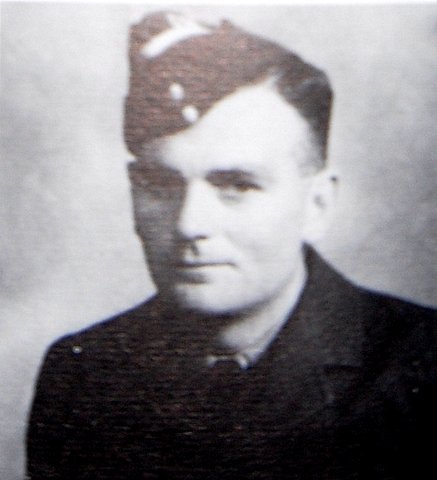
Sergeant ROBERT GEORGE McCARTHY, Royal New Zealand Air Force,12 Operational Training Unit, pilot, aged 27.
He was the son of Robert and Margaret McCarthy of Haumoana, Hawke's Bay, New Zealand.
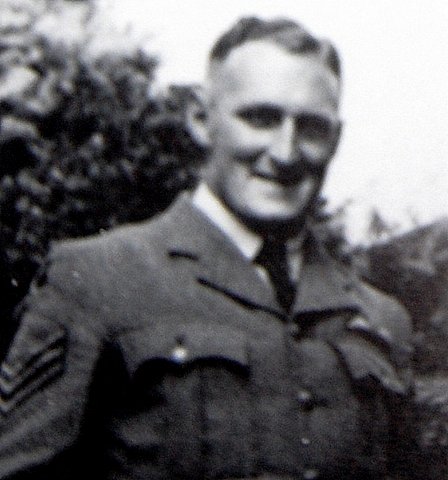
They were on board Vickers Wellington Mk 111 BJ728 which took off from RAF Chipping Warden for a night navigation excercise. At around 0610, while over the town of Conway in Caernarvonshire, the starboard engine failed. They set course for base, but just over an hour later the pilot announced he was going to make a precautionary landing at Little Rissington. However, soon after entering the circuit, the port engine faltered and at 0710 the aircraft came down at Lower Farm, Milton-under Wychwood and burst into flames. The tail gunner was pulled from the wreckage by a civilian worker but the rest of the crew of five perished.
.jpg?timestamp=1554804237705)
6th November 1942:
Sergeant HECTOR WILLIAM FARQUHARSON, Royal New Zealand Air Force, 6 (Pilot) Advanced Flying Unit, Pilot aged 20.
He was the son of William Farquharson and Bessie Farquharson of Christchurch, Canterbury, New Zealand.
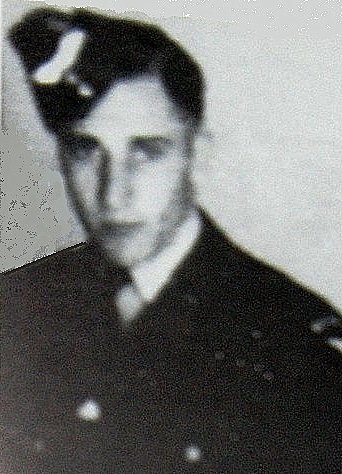
Sergeant Farquharson was piloting Airspeed Oxford Mk 11 AP473 on a night circuit flying exercise, as was Sergeant George Forrester piloting another Oxford, BG551. Sergeant Forrester, who was 19, decided to land without permission, slotting in behind Sergeant Farquharson's aircraft. However the Airfield Control Party gave both aircraft a "red" and they initiated overshoot action, but collided. Both aircraft fell to the ground locked together and burst into flames, killing both pilots.
.jpg?timestamp=1554804237705)
24th November 1942:
Warrant Officer GEORGE LARDNER, Royal Air Force, aged 38.
He was the son of Percy and Fanny Lardner of Selly Oak, Worcestershire and had worked as a motor fitter. He joined the Royal Air Force as an Aircraftman on 13th January 1922, signing on for 6 years in Regulars and 6 in the Reserves. He trained as a general fitter at RAF Halton and served at RAF Manston with M Squadron. In November 1922 he was posted abroad, serving in Egypt and Palestine and passed a course as an armourer. In April 1924 he joined 14 Squadron serving in Iraq, Jordan and Palestine and in April 1926 was promoted to Sergeant. Returning home he married Ada Smith in Birmingham in August 1928. He had been hospitalised on two occasions whilst serving abroad and spent a further month in hospital at Halton shortly after his marriage.
He was recalled to service at the outbreak of war, serving at RAF little Rissington and died in Slade Isolation Hospital in Oxford.
.jpg?timestamp=1554804237705)
12th June 1943;
SERGEANT PETER FRANCIS BAKER, Royal Air Force Volunteer Reserve, 6 (Pilot) Advanced Flying Unit, Pilot aged 20.
He was the son of Edward and Winifred Baker of 4, Park Road, Blackheath, London. He was piloting an Airspeed Oxford Mk I when it developed engine trouble. He baled out of the stricken aircraft near Woolhope in Herefordshire, but did not survive.
.jpg?timestamp=1554804237705)
14th June 1943:
SERGEANT ARTHUR JOSEPH GREATBATCH, Royal Air Force Volunteer Reserve, 6 (Pilot) Advanced Flying Unit, Pilot, aged 22.
He was the son of Ernest and Alice Greatbatch, of Yardley, Birmingham and worked as a manager’s clerk. He enlisted into the RAFVR in Birmingham in 1942 and underwent pilot training. He was killed whilst on a solo training flight when his Airspeed Oxford Mk11 P8968 was in collision with Oxford Mk1 Oxford H724 of 6(P)AFU, piloted by Sergeant Boyd who also died, and crashed at Macaroni Downs Farm 3 miles north of Southrop, Gloucester.

.jpg?timestamp=1554804237705)
17th June 1943:
SERGEANT MICHAEL GARDNER, Royal Air Force Volunteer Reserve, Air Bomber, 1656 Heavy Conversion Unit, aged 21.
He was the son of Squadron Leader George and Mrs. G. M. Gardner, of Maidenhead, Berkshire. He was the bomb aimer on Avro Lancaster Mk1 ED318 which had taken off from RAF Lindeholme, Yorkshire at 2145 for a night time cross-country training exercise. At about 0140 the Lancaster collided with a Vickers Wellington BJ485 from 27 OTU over Brize Norton. The stricken Lancaster crashed at Wigstead Farm, Highworth in Wiltshire. All 7 aircrew aboard were killed, whilst all but one of the Wellington crew parachuted to safety.

.jpg?timestamp=1554804237705)
22nd July 1943:
22nd July 1943:
FLIGHT LIEUTENANT JACK FRANCIS PAGE, Royal Air Force Volunteer Reserve, Navigator/Instructor, 6 (Pilot) Advanced Flying Unit, aged 29. He was the son of Samuel and Lucy Page of Kensington. He married Edith Lord in 1938, living in South Ruislip, Middlesex. He was commissioned into the RAFVR as a Pilot Officer in August 1941.

Sergeant PETER ROSSE HOPE, Royal Air Force Volunteer Reserve, pilot, 6 (Pilot) Advanced Flying Unit, aged 19. He was the son of of Sydney and Elsie Hope, of Brighton, Sussex.
.jpg?timestamp=1554804237705)
11th September 1943:
Cadet 1st class GEORGE EDWARD KENNETH STONE, Air Training Corps, aged 16.
Known as Kenny, he was the son of Frederick and Beatrice Stone, of Bourton on the Water. On the 11th September 1943 at 1650 an Airspeed Oxford DF277 from 1525 Beam Approach Training flight based at Brize Norton collided with another Oxford, from 1539 BAT flight, out of South Cerney. Oxford DF277 crashed at Eastleach in Gloucestershire with the loss of all aboard, including Kenny Stone who was on a flying experience trip.

.jpg?timestamp=1554804237705)
7th October 1943:
Flight Sergeant JACK ARCHER HAZELDENE, Royal Australian Air Force, 21 Operational Training Unit, Pilot, aged 24.
He was the son of Sydney and Mary Hazeldene, of Kangaroo Flat, Victoria, Australia. He was the pilot of Vickers Wellington 1C R1028 which had taken off from RAF Moreton-in-Marsh at 1856 for an evening detail. He lost power from the port engine whilst on finals to land at Little Rissington at 2100 and crashed into the back garden of the Lamb Inn, Great Rissington, with the loss of 5 crew, only the tail gunner surviving.

.jpg?timestamp=1554804237705)
22nd November 1944:
FLYING OFFICER LAWRENCE WILLIAM HARWARD CRAIG, Royal Air Force Volunteer Reserve, pilot, 1660 Heavy Conversion Unit, aged 20.
He was the son of Harward and Elizabeth Alice Craig, of Horley, Surrey. He was commissioned into the RAFVR in November 1943 as a Pilot Officer and made a Flying Officer in April 1944. He was the pilot of Short Stirling III EF201 of 1660 HCU, which took off from RAF Swinderby, Lincolnshire at 1015 for a cross-country exercise, which soon became dogged with engine problems. Initially, the difficulties were confined to the port outer, which was feathered but soon after the inner port began to over speed and F/O Craig, the pilot, attempted to restart the outer motor. Unfortunately, due to a fuel cock being left off, he was unsuccessful and the windmilling blades created such a drag that he lost control. At 1120, the Stirling crashed near Northleach airfield in Gloucestershire. Out of the crew of nine, five were killed.
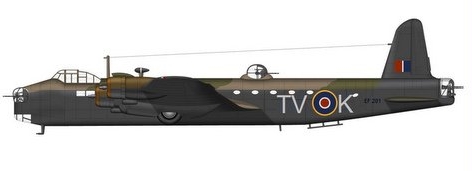
.jpg?timestamp=1554804237705)
25th July 1945:
SQUADRON LEADER LYNN GREGORY, Royal Air Force, Test Pilot aged 37.
He was the son of Harold and Mary Louise Gregory, of Cheltenham, his father having been killed in action on 24th April 1917 whilst serving as a Lance Corporal with the Royal Warwickshire Regiment, during the Arras Offensive in France. He had joined the RAF as a boy airman in September 1923, aged 15, entering the RAF college at Cranwell until August 1926. Originally signing on for 12 years regular service as a fitter in the motor transport section, he served in Iraq, India and Egypt. He was recommended for pilot training, returning home as a sergeant pilot in 1933, training with 10 Flying Training School at RAF Tern Hill in Shropshire. He married Gwendoline Hemming in Cheltenham in January 1936.

He was commissioned as a Pilot Officer later that year and promoted to Flying Officer in November 1938 and served as a Flying Instructor. At the outbreak of war he saw action in Iraq and was promoted to Flight Lieutenant in September 1940 after undertaking a specialist armament course. He returned to England to an appointment in the Ministry of Aircraft Production and was promoted to Squadron Leader in December 1941. He then joined the staff of RAF Boscombe Down experimental establishment in Wiltshire as a test pilot. He took off from Boscombe Down on 25th July 1945 in Hawker Tempest Mk V serial NV946 for a sortie at Enford ranges. The aircraft stalled at 1115 after firing several rockets from 1500 feet in a steep 40 degree dive, as part of a firing test to check rocket tail clearance using zero length launchers. The aircraft went into a stall during a banking turn to port, flipping over before hitting the ground at 400 mph and exploding in flames.
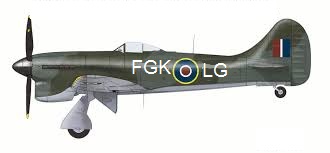
.jpg?timestamp=1554804237705)
As a token of our gratitude to Little Rissington, the information above has been made into two memorial boards. They were presented to the Reverend Christopher Etherton and the Parochial Church Council on Sunday 31st July.


.jpg?timestamp=1554804237705)
FATAL CRASHES AT RAF LITTLE RISSINGTON
3rd November 1942: Airspeed Oxford Mk 11 X7189 of 6 Pilot Advanced Flying Unit whose crew had been caught out by a sudden deterioration in the weather attempted to land back at RAF Little Rissington. Their first approach was too high and they overshot for another attempt but lost control and crashed into West Cottage in Westcote, near Little Rissington, killing both aircrew.
Sergeant Alan Norman Brown, pilot, Royal Air Force Volunteer Reserve aged 22. He was the son of Austin and Mary Brown of Westbourne, Bournemouth and is buried in Bournemouth Parkstone Cemetery.
Sergeant Douglas Thursfield, pilot, Royal Air Force Volunteer Reserve aged 20. He was the son of Albert and Ethel Thursfied of Sutton Coldfield and is buried in St Michael's Churchyard, Boldmere.
.jpg?timestamp=1554804237705)
27th March 1944: Airspeed Oxford N6403 of 271 Squadron had been diverted to Little Rissington from RAF Down Ampney because of fog. On the approach to Little Rissington it struck a store building and crashed, killing all three aboard. They were;
Flight Lieutenant LOUIS CECIL SHANNON, Navigator, Royal Canadian Air Force, aged 29. He is buried in Brookwood Military Cemetery. He was the son of Cecil Holbert Shannon and Rosamonde Beatrice Shannon, of Winnipeg, Manitoba, Canada, and husband to Lilian Agnes Shannon, of Winnipeg.
Flight Sergeant BERNARD HENRY DORN, Observer, Royal Air Force, aged 34. He is buried in Welwyn Garden City Hatfield Hyde Burial Ground. He was the son of Carl Laurits Dorn and Edith Mary Dorn and husband to Cecilia Agnes Dorn, of Seven Kings, Essex.
Sergeant GEORGE WALTER JOSEPH REYNOLDS, Pilot, Royal Air Force, aged 23. He is buried in Greenford Park Cemetery. He was the son of Sidney and Alice Emily Reynolds, of Hanwell.
.jpg?timestamp=1554804237705)
13th July 1944: Vickers Wellington Z1690 took off from Little Rissington, lost height and crashed into a field at Glebe Farm, Great Rissington.
The pilot, Flight Captain Eleanor Isabella Slade, known as Susan, of 5 Ferry Pool, the Air Transport Auxiliary was killed in the crash. She was aged 40 and is buried in Saints Peter and Paul Churchyard in Stokenchurch.
Susan Slade was born in Hong Kong to parents Marcus Warre Slade and Josephine Isabella Slade. She gained her Royal Aero Club Aviator's certificate on 16th September 1928 at Newcastle-upon-Tyne Aero Club, flying a De Havilland 60 Cirrus Moth, pictured below along with Susan Slade's certificate photo.

.jpg?timestamp=1494239560064)
She had worked for Airwork at Heston from February 1929 to June 1940, where her duties entailed the management of the Airport Hotel and Restaurant at Heston and she also had considerable responsibilities in connection with the Airport Club. She also won the first All-Ladies Race at Sywell, Northants in September 1931. She joined the ATA in December 1940 working first at Hatfield and then taking command of No 5 Pool based at Haddenham airfield. She lived at Mallards Court in Stokenchurch. In January 1943 whilst delivering a De Havilland Mosquito she over-corrected the landing and the undercarriage collapsed.
Her confidential report from her Commanding Officer in February 1943 stated:
"She has carried out her duties as Flight Captain in a very satisfactory manner. Her sense of discipline is good, and she is a capable organiser and can always be trusted to do her job efficiently and well. She should make a good Second in Command."
She is pictured below with Captain Graham Head of the ATA.
.jpg?timestamp=1494241535083)
In March 1944, she was driving back in the dark to her billet after duty, turned a corner and ran into a lorry. She hit some scaffolding which was sticking out of the back of the lorry and had some considerable injuries to her head and face, needing dental and other repairs. She was off work for a month, returning to duty on the 13th April 1943.
She arrived at RAF Little Rissington on 13th July 1944 to ferry Vickers Wellington from Z1690 of 8 Maintenance Unit to 26 Operational Training Unit at RAF Wing. After taking off at about 1810 the aircraft was observed to make a 50 degree turn to starboard and lose height as it approached the village of Great Rissington. At the last minute the aircraft swerved away and crashed into a field at Glebe Farm. Flying Officer John Terence Gardiner, serving as medical officer at RAF Little Rissington, stated that he was informed of a crash and, on arriving on the scene at 1840 he found the aircraft on fire. He examined the body of the pilot and in his opinion death was due to multiple injuries and burns.
Flight Captain Slade was commended for her actions in avoiding crashing on the village, a subsequent investigation found no sufficient cause for the crash.
.jpg?timestamp=1554804237705)
15th March 1945: Avro Lancaster Mk I LL902 EM-A from 207 Squadron which was returning from a bombing operation to Lutzkendorf, crashed at 0250 when it flew into the ground because of heavy fog whilst landing at Little Rissington, after being diverted. Six crew died in the crash and the seventh the following day in hospital. They were;
Flying Officer MICHAEL JOHN HEDLEY COOKE, Pilot, Royal Air Force Volunteer Reserve, aged 23. He was buried in Oxford Botley Cemetery. Son of John Hedley and Dora Cooke and husband of Phyllis Eva Cooke, of Colwall, Herefordshire.
Pilot Officer RONALD FAIRCLOUGH, Flight Engineer, Royal Air Force Volunteer Reserve, aged 24. He is buried in Trevethin St Cadoc Churchyard and was born in Pontypool, Monmouthshire.
Pilot Officer HOWARD BRUCE BODDY, Navigator, Royal Canadian Air Force, aged 33. He is buried in Brookwood Military Cemetery. He was the son of Francis Edward and Margaret Maria Boddy, of Toronto, Ontario, Canada and husband of Muriel Louise Boddy, of Toronto.
Flight Sergeant JOSEPH WILLIAM LAING, Air Gunner, Royal Air Force Volunteer Reserve, aged 23. He was the son of Thomas and Mary Laing, of Wingate and is buried in Hutton House Roman Catholic Burial Ground.
Flight Sergeant REGINALD GEORGE ANDREW BREACH, Wireless Operator, Royal Air Force Volunteer Reserve, aged 33. He was the husband of Florence May Breach, of Twickenham, Middlesex, and is buried in Conisbrough Cemetery.
Flight Sergeant FREDERICK RONALD STEAD, Air Gunner, Royal Air Force Volunteer Reserve, aged 23. He was the son of Thomas and Esther Ellen Stead, of Bold, and is buried in Farnworth St Luke Churchyard.
Pilot Officer JOHN D'ARCY, Air Gunner, Royal Air Force Volunteer Reserve, aged 22. He was the son of Lt.-Col. J. I. D'Arcy, Royal Artillery, and Mrs. D'Arcy, of Athenry, County Galway, Irish Republic. He is buried in Oxford Botley Cemetery.
Avro Lancaster LL902 E-MA, pictured below, flew more air operations with 207 Squadron than any other Lancaster.
.jpg?timestamp=1494331355765)
.jpg?timestamp=1554804237705)
FLIGHT LIEUTENANT KEVIN O' SULLIVAN
Kevin Thomas Anthony O’ Sullivan was born in 1920 in Wandsworth, South London to parents Patrick and Theresa O’ Sullivan. He worked as a shipping clerk in the City of London before volunteering for aircrew duties. He was accepted for pilot/observer training and recommended for a commission which was gazetted in August 1942. He was posted as a night fighter pilot to 255 Squadron flying the Bristol Beaufighter twin engine fighter. The Squadron were sent to North Africa on 27th November 1942 and were based in Algeria to defend against German night bombing raids. He was a victim of a friendly fire incident when his Beaufighter was hit by gunfire from Royal Navy ships, resulting in a perspex splinter temporarily blinding him in one eye. He managed to crash-land on his airfield n a thunderstorm after being shepherded home wingtip-to-wingtip byhis Squadron Leader. He went on to make three confirmed kills before being posted back to England.
He then converted to the De Havilland Mosquito and spent time as a flying instructor with 63 Operational Training Unit, before being posted to 125 Squadron, another night fighter squadron. He carried out patrols guarding the Normandy Landings and claimed another kill, and went on to combat the V1 rocket assault and fly patrols against German intruders and shipping. The award of a Distinguished Flying Cross was gazetted in September 1944 by which time he had become a Flight Lieutenant. He married Lillian Hibbit in Balham in May 1945 and was demobbed from the RAF in August 1946.
Civilian life did not suit Kevin and in November 1950 he re-applied for a short term commission in the RAF. He was posted to the Canal Zone in Egypt, once again flying the Mosquito. Returning to the UK in the spring of 1954, he undertook a fast jets conversion course at 228 OCU RAF Leeming, introducing him to Gloster Meteors. His wife sadly died of cancer in January 1958 whilst Kevin was serving at the Aircrew Selection Centre at Hornchurch, causing his two young daughters to be sent to a Catholic boarding school. He re-married to Jean Hunt in January 1961.
In January 1963 Kevin was posted to 209 Squadron based at Seletar, Singapore where they flew supply runs in support of British Special Forces action in the Indonesian–Malaysian confrontation of 1963–1966. Kevin was one of the pilots involved in these covert flights into hostile jungle territory, flying the single-engine version of the Scottish Aviation Pioneer. He returned from the Far East in July 1965, to be stationed over the next two and a half years at RAF Shawbury, RAF Leconfield and RAF Little Rissington. He ceased flying duties on his 45th birthday, transferring to Ground Branch and training as an Air Traffic Controller at Little Rissington.
On 20th February 1968 he was driving his daughters and a friend back to the railway station to return to boarding school, in thick fog, when his car collided with an road works vehicle showing no lights. They all suffered minor injuries and were taken to the medical centre in RAF Little Rissington, his wife and one daughter being taken to hospital. The next day Kevin O’ Sullivan killed himself with his shotgun, a Coroner’s Court in Stow on the Wold recorded that he had committed suicide whilst the state of his mind was disturbed. He was aged 41.
.jpg?timestamp=1554804237705)